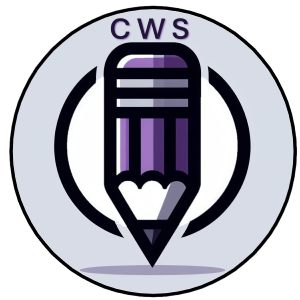 We’ve all heard it. I see the reminders practically every week in one form or another. And they all say the same thing.
We’ve all heard it. I see the reminders practically every week in one form or another. And they all say the same thing.
Get an editorial calendar.
Now if your first thought was “editorial, schmeditorial,” you’re not alone. Whether it’s because planning content is overwhelming or because it’s viewed as administration, many marketers skip this step. And I have to admit, it’s tempting.
But it’s also a mistake.
Using editorial calendars in B2B content marketing has lots of benefits. It helps you:
- Ensure you have content for each part of the buying cycle
- Plan content focused on each of your buyers and influencers
- Create content in a variety of formats
- Build a structure to help you manage freelancers and in-house content creators
- See how to calendar your social media marketing content
- Visualize and plan how your year is going to unfold
Those benefits are hardly administrative. And by having an editorial calendar it’s easier not to fall into the mode of everything being either being done “on the fly” or “because someone asked for it.” It will also help you educate those around you and give you a way to stick to your plan.
So how to get started?
Keep It Simple
I’m not going to get into a lot of detail on how to put together an editorial calendar for content marketing. For your first attempt, I’d recommend keeping things simple. Once you have some practice at working with a calendar you can see how much detail is helpful for you. Most calendars have these few basic pieces of information.
- Key dates (i.e. conferences, product releases/updates, customer panels, etc.)
- Planned/actual content publication dates
- Title
- Format (i.e. article, blog post, white paper, etc.)
You may also want to consider just keeping a list of content ideas, just so all of your content-related planning and brainstorming is in one place.
Choose Your Timeframe
Part of the angst with editorial calendars is people think they have to plan out the entire year at once. And I can’t blame them. It can be overwhelming to think that you have to know what you’re doing in December right now. Especially if your standard mode of operation is you’re not sure what you’re doing next week.
But here’s the thing. You really don’t have to plan out the entire year to benefit from an editorial calendar.
You just have to choose a timeframe that works the best for you and your business. Whether it’s monthly, quarterly, semi-annually or yearly doesn’t really matter. You want to choose a timeframe that’s:
- Long enough to give you the benefits of coordinating all your content activities
- Short enough so you can be flexible (and minimize overwhelm)
For many folks an ideal timeframe is going to be quarterly. Why? Because if you plan things out for three months you’ll get the benefits of planning for resources, coordinating content releases, and reducing the number of things produced in emergency mode. (This is true even if everyone you know works their best on two hours of sleep, lots of coffee, and jagged on stress.)
Three months is also short enough to allow flexibility. Did the white paper not go over the way you’d hoped? Let’s try a different format for the next big piece. Have a big conference come onto the radar you didn’t know about? You can still adjust and do specific content for it. You get the idea.
Use Your Promotional Calendar as a Basis
I can hear the gasps now. Content marketing isn’t the same as promotional marketing!
You’re right. It’s not. I get that.
But.
Most companies do promotional marketing, even if it’s only in the form of monthly sales promotions. Some have promotional calendars and are really good at ensuring promotions are properly staggered, hit all the different product lines, target different buyers, etc.
So when you build your calendar, don’t start with a blank slate (any writer can tell you that’s incredibly intimidating in its own right). Start with the promotional calendar as a springboard.
Here’s what I mean.
Let’s say January’s promotion is a free trial of software A. What content do you have for software A? Does it need to be updated or retired? Does it touch every part of the buying cycle? Does it speak to your prime buyer and their strongest influencer? Have you blogged about the benefits of software A? Do you have a case study on software A? What do existing customers say about software A?
You see where I’m going. By starting with an existing framework, you’re now able to jump right in, do a quick content audit, see some opportunities for content, and get those on the calendar.
It may not be a perfect solution, but it’s a start. And when it comes to editorial calendars, sometimes that’s most of the battle.
What do you think? What are some tips you have to make editorial calendars better or less intimidating?
*Image courtesy of Joe Lanman

Trackbacks/Pingbacks